#SumpPumps
Text
Don't Let Leaks Ruin Your York Home: MK Basement Waterproofing to the Rescue!
Living in York, PA, means enjoying beautiful seasons, but it also means contending with potential basement issues like leaks, cracks, and dampness. These problems can not only damage your foundation and belongings, but also create a health hazard and hinder your dream of a finished basement.
MK Basement Waterproofing is here to help! We are your local experts in keeping your York home dry and secure, offering a comprehensive range of waterproofing services:
Foundation Repair: We address structural issues to ensure long-lasting stability.
Basement Crack Repair: We seal cracks of all sizes, preventing water infiltration.
Sump Pump Installation: We recommend and install the right sump pump system for your needs.
French Drain Installation: We divert water away from your foundation, preventing leaks.
Basement Waterproofing: We utilize proven methods to create a dry and healthy basement environment.
Crawl Space Waterproofing: We protect your crawl space from moisture and potential mold growth.
Our team of experienced professionals uses high-quality materials and advanced techniques, ensuring a permanent solution to your basement woes. We understand the unique challenges of York's climate and tailor our approach accordingly.
Don't wait for a small leak to become a major problem! Contact MK Basement Waterproofing today for a free quote. We're committed to providing you with peace of mind and a dry, usable basement you can finally enjoy.
1 note
·
View note
Text

Unlock the solution to all your dewatering challenges with us! We've got the expertise, equipment, and experience to keep your operations running smoothly. Say goodbye to water worries and hello to efficiency. Trust in us for all your dewatering needs. 💧🔒
For More Information
📲 +91 98415 82888
🔗 https://www.prasanthdewatering.com/
#DewateringExperts#ProblemSolved#PrasanthDewatering#Dewatering#WaterManagement#PumpSolutions#DeWater#SiteDrainage#GroundwaterControl#DrySite#ConstructionDewatering#EnvironmentalSolutions#SumpPumps#MondayPost
0 notes
Text
From Downspouts to Sump Pumps: Exploring the Best Residential Flood Control Systems for Every Budget
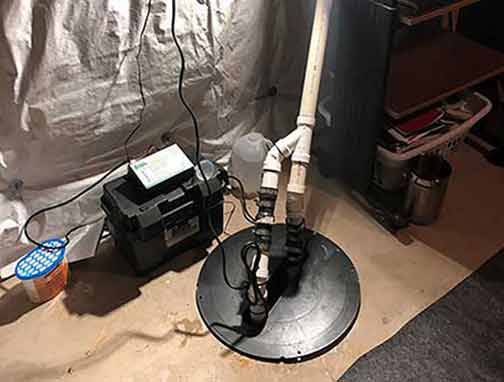
Living in a flood-prone area can be challenging, but with the right flood control systems in place, you can protect your home and belongings. From downspouts to sump pumps, there are a variety of options available for every budget. In this article, we will explore some of the best residential flood control systems that can help you safeguard your property from water damage.
1. Downspout Extensions
One of the simplest and most affordable flood control systems is downspout extensions. These are plastic or metal attachments that direct rainwater away from your home's foundation. By extending the downspouts, you ensure that water is discharged a safe distance away, preventing it from pooling near your house and potentially causing flooding.
2. Rain Barrels
Rain barrels are an environmentally friendly solution that captures rainwater from your downspouts. These barrels can be connected to your downspout system, allowing you to collect and store rainwater for future use in your garden or for other non-potable purposes. By reducing the amount of water that flows into storm drains, rain barrels help alleviate the strain on municipal drainage systems during heavy rainfall.
3. French Drains
If you have a sloping yard or drainage problems, installing a French drain can be an effective flood control solution. A French drain is a trench filled with gravel or rock that redirects water away from your property. The trench is typically sloped to ensure proper water flow, and it can be connected to a pipe system that transports water to a safe location, such as a drainage ditch or dry well.
4. Retaining Walls
For properties located on sloping terrain, retaining walls can be an excellent flood control system. These walls are designed to hold back soil and prevent erosion during heavy rain. By retaining the soil, they help regulate water flow and reduce the risk of flooding. Retaining walls can be made from various materials, including concrete, stone, or even wood, depending on your budget and aesthetic preferences.
5. Flood Alarms
Flood alarms are an affordable way to detect water intrusion in your home. These devices are typically placed in areas prone to flooding, such as basements or near water heaters, and they alert you when water levels rise above a certain threshold. Flood alarms can provide early warning signs of a potential flood, allowing you to take immediate action and minimize water damage.
6. Sump Pumps
Sump pumps are essential flood control systems, especially for homes with basements or low-lying areas prone to water accumulation. These pumps are installed in a sump pit and activate automatically when water levels rise. Sump pumps work by removing water from the pit and discharging it away from your home, preventing basement flooding. Investing in a reliable sump pump is crucial to protecting your property from extensive water damage.
Conclusion
When it comes to residential flood control, there are various systems available to suit every budget. From simple downspout extensions to more advanced sump pumps, each solution plays a vital role in preventing water damage and safeguarding your home and belongings. Assess your needs, consider your budget, and consult with professionals to select the most suitable flood control system for your property. Remember, proactive measures today can save you significant stress and financial burden in the future.
1 note
·
View note
Text
When Is It Time to Replace Your Sump Pump?
Your sump pump is an essential part of your home's drainage system, and keeping it in good working order is crucial. A sump pump is typically located in the basement and is used to pump water out of the home to prevent flooding. But when is it time to replace your sump pump?
A sump pump usually lasts for about ten years, but there are a few signs that it might be time for a replacement sooner. If you notice any of these signs, it's essential to call a professional to inspect your sump pump and determine if a replacement is necessary.
Irregular Cycling
Even in heavy rain, something is wrong if your sump pump repeatedly cycles on and off. The pump could activate even when just a few inches of water were built in the basin due to anything as simple as a poorly set float switch.
Due to wiring issues, the pump might switch on and off at strange timings. The pump will intermittently start and stop due to an electrical short in the equipment or the home.
Strange Noises
If you hear strange noises from your sump pump, it could be a sign that it's time for a replacement. The motor might start grinding or humming, or you might hear water sloshing around in the basin.
These unusual noises might be due to several things, including a stuck impeller or a damaged motor bearing. However, odd noises indicate that your sump pump's components are worn out or broken. Your plumber can advise whether a simple repair or a complete replacement is necessary.
Infrequent Pump Usage
If you don't use your sump pump very often, it might be tempting to put off replacing it until it finally breaks down. However, if you live in an area with a high water table or are at risk for flooding, it's crucial to have a working sump pump in case of an emergency.
A sump pump that isn't used very often can develop rust and corrosion, leading to mechanical problems. If you don't use your sump pump regularly, it's essential to have it inspected yearly to ensure it's in good working order.
Not Working When It Should
Of course, the most obvious sign is that it's time to replace your sump pump if it stops working. If your pump doesn't turn on when water starts to enter the pit, or if it shuts off before all the water is pumped out, it's time for a new one.
A sump pump that doesn't work correctly can lead to flooding in your home, so it's essential to call a professional as soon as you notice a problem.
Excessive Vibrations
If your sump pump is vibrating excessively, it's a sign that something is wrong. The motor might be overloaded, or the impeller might be damaged. An impeller is the part of the pump that moves water through the system.
A misaligned float switch can also cause excessive vibrations. A float switch is a sensor that tells the pump when to turn on and off. If the float switch is in the "on" position, the pump will run continuously, which can damage the motor. Excessive vibrations can also be due to a build-up of sediment in the pit.
If you notice your sump pump is vibrating more than usual, it's essential to call a professional to inspect it.
Lack of Horsepower
Your sump pump may not have enough horsepower to handle the amount of water it must push or the intricate piping arrangement it must do if it takes a while to pump out water. Properly transfer the water through pipelines with high fixtures, many elbows, or large water volumes by having a sump pump with higher horsepower.
Even though your sump pump is new, it is insufficiently strong if you have abnormally extended run times. If this is the case, you must upgrade to a sump pump with more power.
On the other hand, if your basement frequently floods and you are using a 1/2 horsepower sump pump, you will likely have to replace your current one with one that has a 3/4 to 1 horsepower motor.
Conclusion
A sump pump can last for many years if it's properly maintained. Learn more about its lifespan here: https://www.amfam.com/resources/articles/at-home/how-long-should-a-sump-pump-last.
However, there are a few signs that it might be time for a replacement. If your sump pump is making strange noises, vibrating excessively, or not working correctly, it's essential to call a professional to have it inspected.
If you're unsure whether your sump pump needs replacement or if you need help choosing a new one, contact a professional plumber. Furnace Repair Winnipeg will be able to assess your situation and advise you on the best course of action. Contact us today to schedule a consultation.
https://furnace-repair-winnipeg.ca/when-is-it-time-to-replace-your-sump-pump/
0 notes
Photo

A Brief Guide On The Types Of Sump Pumps
One of the most alarming concerns related to basements is water clogging, especially during the rainy season. This is precisely where sump pumps come into the picture.
1 note
·
View note
Text
Sump Pump Maintenance Checklist
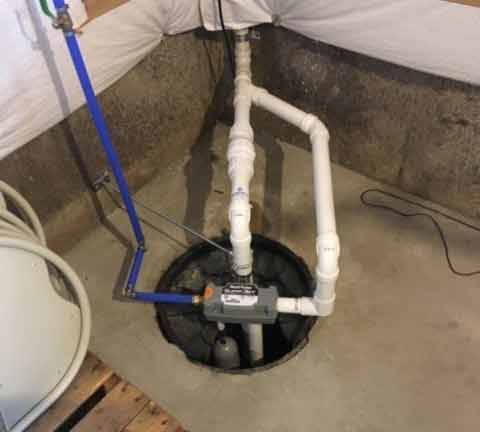
The sump pump is your first line of defense against flooding in your home’s basement and the costly repairs that can follow such incidents. But for a sump pump to do what it is designed to do, you need to always ensure that it is working as it should.
Sump pump malfunctions don’t happen frequently but when they do, the problem is often not discovered until it is too late. As KRS Holdings warns, homeowners typically get to realize that the sump pump has failed after their home is unexpectedly flooded.
The financial and emotional toll of dealing with flooding in your home is nothing compared to the effort it takes to make sure your sump pump is working. To protect your precious home and its valuable content, you should know how to maintain your sump pump.
How does a sump pump work and how can you prevent sump pump failures that expose your home to flood damage? This maintenance checklist explains everything you need to know to avoid unpleasant surprises from your sump pump.
How a sump pump works
The sump pump prevents flood damage to those parts of your home that are below ground. A sump pump automatically removes water that finds its way into the basement or parts of the home that are below ground. It reduces the risk of water damage by runoff or snowmelt.
The sump pump sits inside a basin or sump; a pit that is usually 2 feet deep and 18 inches wide. This pit collects any water that enters the basement area and when the water reaches a certain level a floating switch inside the sump triggers the sump pump.
The water is then pumped out of the basin to a location outside the home where it will not endanger the house. Once the basin is empty or the water inside it reaches a certain level, the pump switches off. This entire process happens without the homeowner’s involvement.
But sometimes the sump pump will fail. Sump pump failures may be due to disruption of power supply, the pump becoming clogged with debris, or its internal components malfunctioning. Periodic inspections help you catch sump pump failures before they result in disaster.
A sump pump maintenance checklist
Check the power supply
Ideally, the sump pump should be on an independent circuit. Check the sump pump power cord every quarter to see if it is connected. If there is a power outage during a storm, check the sump power supply when the electricity supply is restored.
Make sure the pump is level
It is normal for the motor to vibrate when the sump pump runs. Over time, these small vibrations can lead the sump pump to shift out of place. If the sump pump is out of level, it will not function as expected.
Check that the sump pump starts automatically
Pour enough water into the sump pit to raise the float or pressure sensor until the pump is activated. Note strange sounds or smells while the pump is running. If the pump does not power on automatically, you have a sump pump or float switch failure.
Remove the sump pump
If the pump is working properly, remove it from the basin and proceed to the other steps listed below. If the pump is unresponsive, get an expert to take a look at the sump pump and float switch.
Smell the sump for odors
Unpleasant odors from the sump pump usually come from the sump pump trap. To clean the trap and get rid of the odor, use a mixture of five parts of water to one part of bleach to clean the basin.
Clean the impeller
The sump pump has a small filter known as the impeller. If this filter is clogged, the pump will stop working or make a whining noise when it runs. This problem happens often but is easily fixed by cleaning the impeller.
Inspect the check valve
The check valve prevents backflow after the sump is turned off. Sometimes it can get damaged or moved out of place. Remove the check valve and inspect it for damage. Replace it with the check valve’s arrow pointing in the direction of the sump pump.
Check the discharge pipes
Discharge pipes convey water from the sump pump to a dry well on your property or into the municipal storm drain. Leaks and weak points on the pipes will impair the effectiveness of your sump pump. Also, check the discharge pipe vent for debris.
Remove debris from the basin
Debris will often find its way into the basin along with water entering the pit. This debris should not be allowed to get into your pump. Keep the sump basin free of debris to protect the pump and float mechanism.
Install a backup power and backup pump
In the event of power outages during heavy thunderstorms, you need a backup power source to ensure your home is not left at the mercy of the elements. A backup sump pump will also protect your home in case your primary sump pump fails during an emergency.
0 notes
Text
Utilizing Submersible Dewatering Pumps: Their Diverse Applications
Cosmos submersible Dewatering Pump can be used for a number of applications. Some of them are mentioned below:

#SubmersibleDewateringPump#WaterManagement#Construction#Mining#Industrial#Engineering#Infrastructure#FloodControl#PumpTechnology#EfficientDrainage#GroundwaterControl#DewateringSolutions#HeavyDutyPumps#CivilEngineering#EnvironmentalEngineering#UrbanDevelopment#SumpPump#SiteDrainage#WastewaterManagement#DewateringEquipment#PumpSolutions
0 notes
Text
Sump Pump vs Sewage Pump: Don't get them confused! 🏡🚽 Learn the key differences to ensure your water management needs are met effectively. 💧
#SumpPump#SewagePump#WaterManagement#KnowTheDifference#HomeMaintenance#PlumbingSolutions#WasteWater#PumpComparison#FloodPrevention#ChooseWisely
0 notes
Text
#vacuumpumps lobepumps vanepumps sumppumps#pump gearbox blowers chemical#dodgegearbox#sulzarpump gearboxrepair#flendergearbox#gardendenver#blowers#gearboxrepair#gearbox#vacuumpump
0 notes
Text
Sump Pump Installation, Maintenance & Repair
These devices are installed in the basement or crawlspace of a building and are designed to pump water out of the area and away from the foundation. Call
@waterproofingservicestoronto at (437) 836-0587 now.

1 note
·
View note
Photo
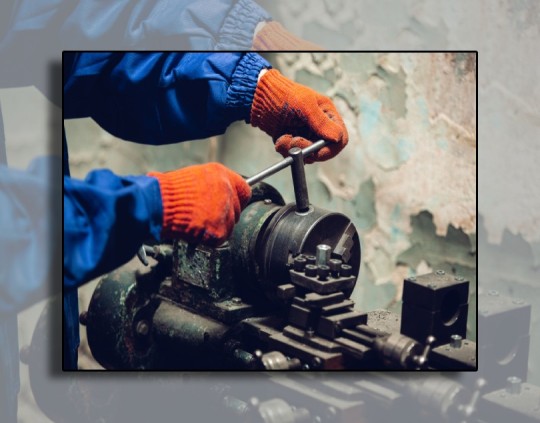
Sump Pump Replacement In Napa, CA - All Star Plumbing
Maintaining a clean and functional sump pump is necessity. All Star provides complete Sump Pump Repair and Replacement services in Napa, CA for your home.
Visit Website: https://www.allstarplumbingnapa.com/sump-pump-replacement/
0 notes
Text
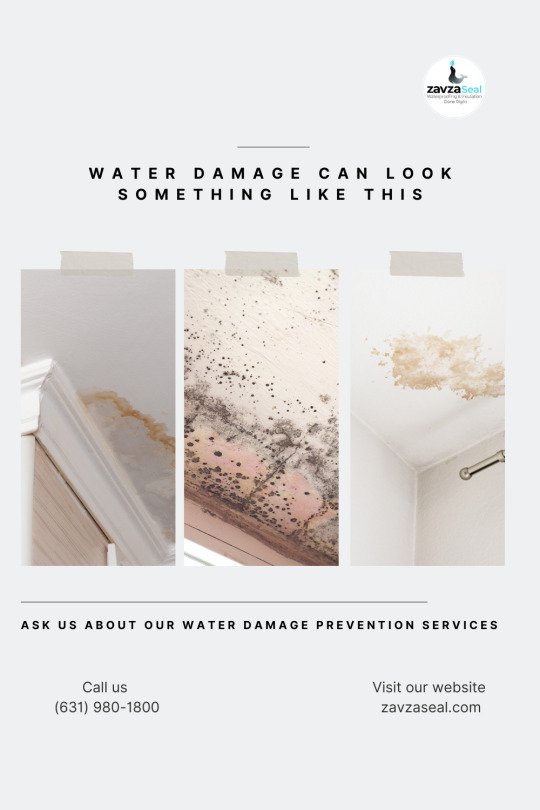
Water damage restoration and remediation can cost an arm and a leg, depending on the extent of the damage. Therefore, it is always better to invest in water damage prevention methods and inventions. You can never be too careful! To learn more about water damage prevention, click here: https://zavzaseal.com/water-damage-prevention/
.
.
.
.
#waterproofingcompany#driveways#waterdamageprevention#insultationservices#waterproofing#drivewayrepair#basements#insulation#longislandwaterproofing#sumppump
0 notes
Text
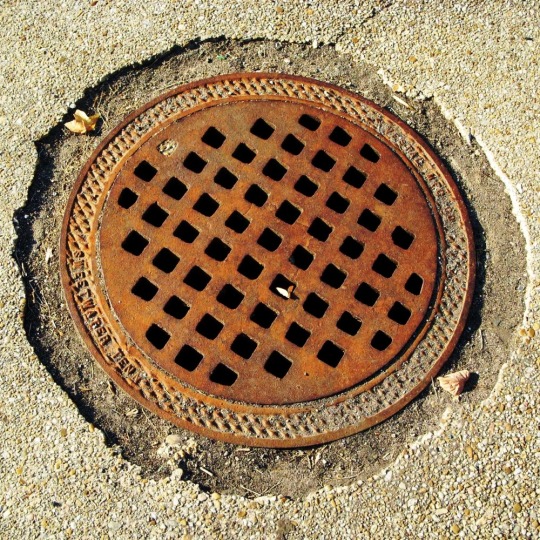
Did you know that sewage backup coverage is an OPTIONAL addition to your homeowners insurance policy?
If you ever experience a sewage backup, this valuable coverage will assist you in ensuring the area is cleaned, disinfected, and dried properly to prevent illness and additional damages!
Talk to your local insurance agent today about adding this important coverage to your policy!
#sewer#sewerbackup#water#waterbackup#sumppump#backup#insurance#insuranceclaim#claim#home#house#waterdamage#emergency#DisasterBlaster#scranton#wilkesbarre#hazleton#nepa
1 note
·
View note
Text
Factors to Consider When Selecting a Sump Pump for Basement Waterproofing
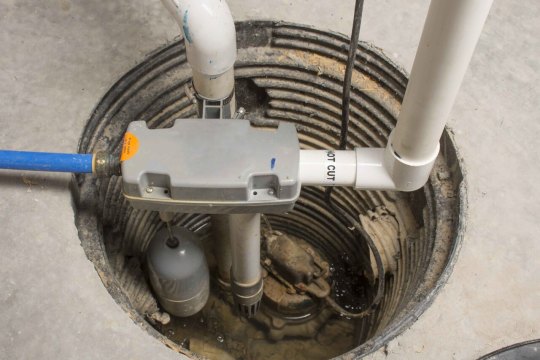
Basement waterproofing is a crucial step in protecting your home against flooding and water damage. A sump pump plays a vital role in keeping your basement dry by collecting water and pumping it away from your home's foundation. However, choosing the right sump pump can be a daunting task. To help you make an informed decision, here are some factors to consider when selecting a sump pump for basement waterproofing.
1. Pump Capacity
The capacity of the sump pump refers to its ability to pump out water within a certain time period, typically measured in gallons per hour (GPH). Consider the size of your basement and the potential water flow to determine the appropriate pump capacity. A larger basement or areas prone to heavy rainfall may require a higher GPH rating. Selecting a sump pump with sufficient capacity ensures it can handle the water volume and prevents the pump from burning out.
2. Type of Pump
There are two commonly used types of sump pumps: submersible and pedestal. Submersible pumps are placed directly in the sump pit, submerged underwater. They are more discreet and suitable for finished basements. Pedestal pumps, on the other hand, have the motor mounted above the pit and are easier to access for maintenance. Consider your specific needs and preferences when deciding between the two types.
3. Power Source
Sump pumps can be powered by electricity or batteries. Electric-powered pumps are more common and efficient, as they provide a continuous power source. However, they are susceptible to power outages. Battery-powered sump pumps serve as a backup during emergencies and ensure water removal even when the electricity is unavailable. Consider your area's power reliability and the level of protection you desire when choosing between the two power sources.
4. Float Switch
A float switch is a crucial component that activates the sump pump when water levels rise above a certain point. The switch detects the water level and triggers the pump to start pumping. Select a sump pump with a reliable, adjustable float switch that can effectively control the water level in the sump pit. Furthermore, ensure that the switch is made of durable materials to withstand the constant exposure to water and avoid premature failure.
5. Construction Material
The construction material of the sump pump determines its durability and resistance to corrosion. Look for pumps made of cast iron or stainless steel, as they are more sturdy and long-lasting. Avoid pumps with a plastic construction, as they may not be able to endure the harsh conditions of a sump pit. A well-built and robust sump pump ensures reliable performance and reduces the need for frequent replacements.
6. Noise Level
The noise level of a sump pump can vary significantly depending on the model and brand. Consider the proximity of your basement to living areas in your home. If noise is a concern, opt for a sump pump with noise-dampening features. Many manufacturers now produce pumps with quieter motors or provide noise-reducing accessories. Selecting a quieter sump pump enhances the comfort of your living space and reduces disturbances.
7. Brand and Warranty
Choose sump pumps from reputable brands that have been in the market for a considerable time. Established brands often provide better quality products and reliable customer support. Additionally, check for warranty options offered by the manufacturer. A longer warranty period indicates the manufacturer's confidence in their product. It is advisable to invest in a sump pump with a comprehensive warranty to protect your investment and ensure peace of mind.
8. Professional Installation
While it is possible to install a sump pump yourself, professional installation is worth considering. An experienced basement waterproofing contractor can assess your specific needs, recommend the right sump pump, and install it correctly. Professional installation ensures that the pump functions optimally and reduces the risk of any potential issues. Furthermore, hiring a professional may save you time and effort in the long run.
Conclusion
Choosing the right sump pump for basement waterproofing is essential to maintain a dry and safe environment. With careful consideration of factors like pump capacity, type, power source, float switch, construction material, noise level, brand, warranty, and professional installation, you can make an informed decision and protect your home from potential water damage. Prioritize a sump pump that meets your specific requirements to ensure reliable performance and peace of mind for years to come.
1 note
·
View note
Text
Things To Consider When Buying A Sump Pump
When your basement is flooding, the only thing on your mind is getting the water out. And the best way to do that is by using a sump pump. But with so many different types and brands of sump pumps on the market, it can be hard to know which one is right for you.
That's why we've put together this sump pump guide, to help you understand the different types of pumps and what to look for when buying a sump pump.
Different Types of Sump Pumps
Submersible
Submersible sump pumps are designed to be submerged in the water, with the pump being hermetically sealed. It makes them more durable and resistant to corrosion than pedestal sump pumps.
Submersible sump pumps are also less likely to clog, as they don't have any intake screens that can get blocked by debris. Check here what you should look for in a submersible sump pump: https://www.sumppumpsdirect.com/stories/104-How-To-Pick-The-Perfect-Submersible-Sump-Pump.html.
Pedestal
Pedestal sump pumps sit outside the sump pit, with the pump itself above the water level. It makes them more susceptible to corrosion, as they're not protected from the water and moisture like submersible sump pumps are.
However, pedestal sump pumps are less likely to clog, as the intake screen is above the water level and not susceptible to being blocked by debris.
What to Look for When Choosing a Sump Pump
When choosing a sump pump, there are several things you should take into account:
Horsepower
1 HP, 1/2 HP, 3/4 HP, 1/2 HP, and 1/4 HP are typical motor sizes. But you should be looking at how much water it can pump each hour and how high. Get a more powerful pump if your current one operates continuously, regardless of season or the weather.
In the same way, you need one with the strength to pull liquid up the long discharge pipe if your basement ceiling is very high and the sump is deep.
Outlet Size and Type
An important factor that people often overlook is the outlet size and type. Most sump pumps have a 1-1/2" or 2" NPT (National Pipe Thread) outlet, but some have a garden hose connection. The outlet size will determine what size discharge pipe you can use.
Choose a sump pump with a 2" outlet to reduce the risk of clogging and increase the flow rate. If you have a garden hose connection, make sure it's the right size for your hose.
Head Pressure
The head pressure is how high the water can be pumped before the flow rate decreases. It is measured in feet and is an essential factor to consider if you live in an area with a high water table.
You should also consider the length of the discharge pipe, as this will also affect the head pressure.
Flow Rate
The flow rate is how much water the pump can move in a given period and is typically measured in gallons per hour (GPH).
A sump pump with a higher flow rate can move more water in the same amount of time, so it's essential to choose one that is appropriate for the size of your sump pit.
Conclusion
When choosing a sump pump, it's essential to consider the different types and what to look for. Submersible sump pumps are more durable and resistant to corrosion, but pedestal sump pumps are less likely to clog.
When buying a sump pump, you should consider horsepower, outlet size, type, head pressure, and flow rate. If you need help with sump pump installation, you can reach out to Furnace Repair Winnipeg. We offer sump pump services for homes and businesses in Winnipeg, MB. Call us today to schedule an appointment!
https://furnace-repair-winnipeg.ca/things-to-consider-when-buying-a-sump-pump/
0 notes
Photo

Your Essential Guide To Detecting And Repairing Water Damage At Home
This article aims to give you a systematic approach to identifying and remedying water damage, thereby safeguarding your property's integrity and market value. Equipped with this understanding, you'll be capable of protecting your home and promptly addressing water-related problems before they develop into substantial and costly damages.
3 notes
·
View notes